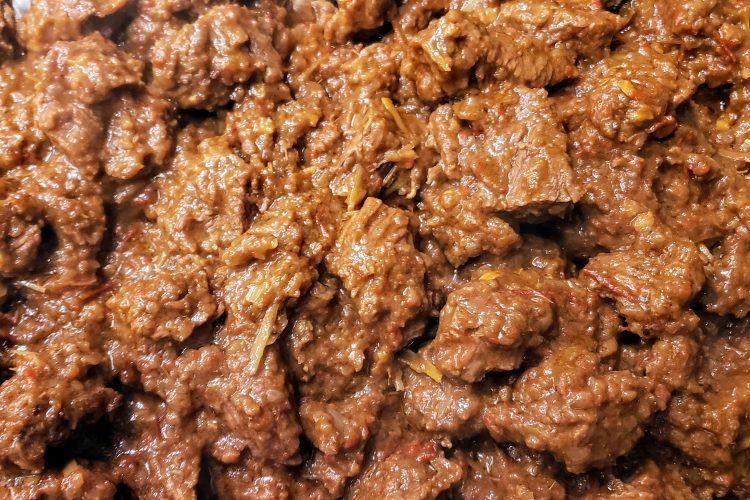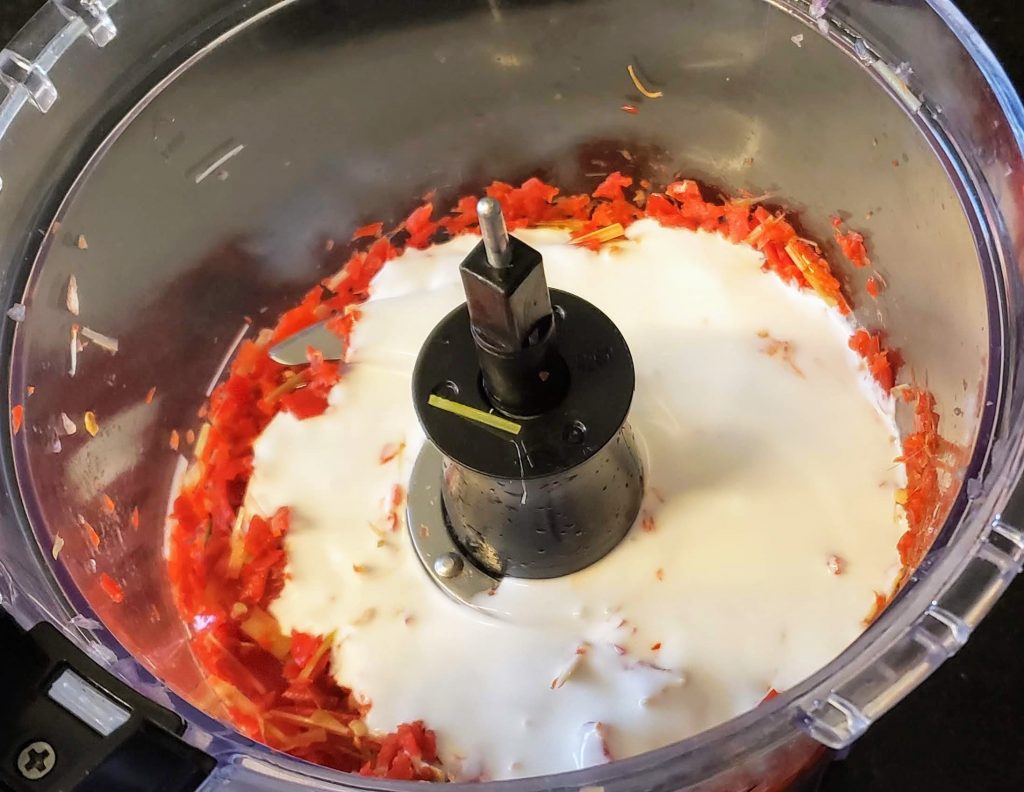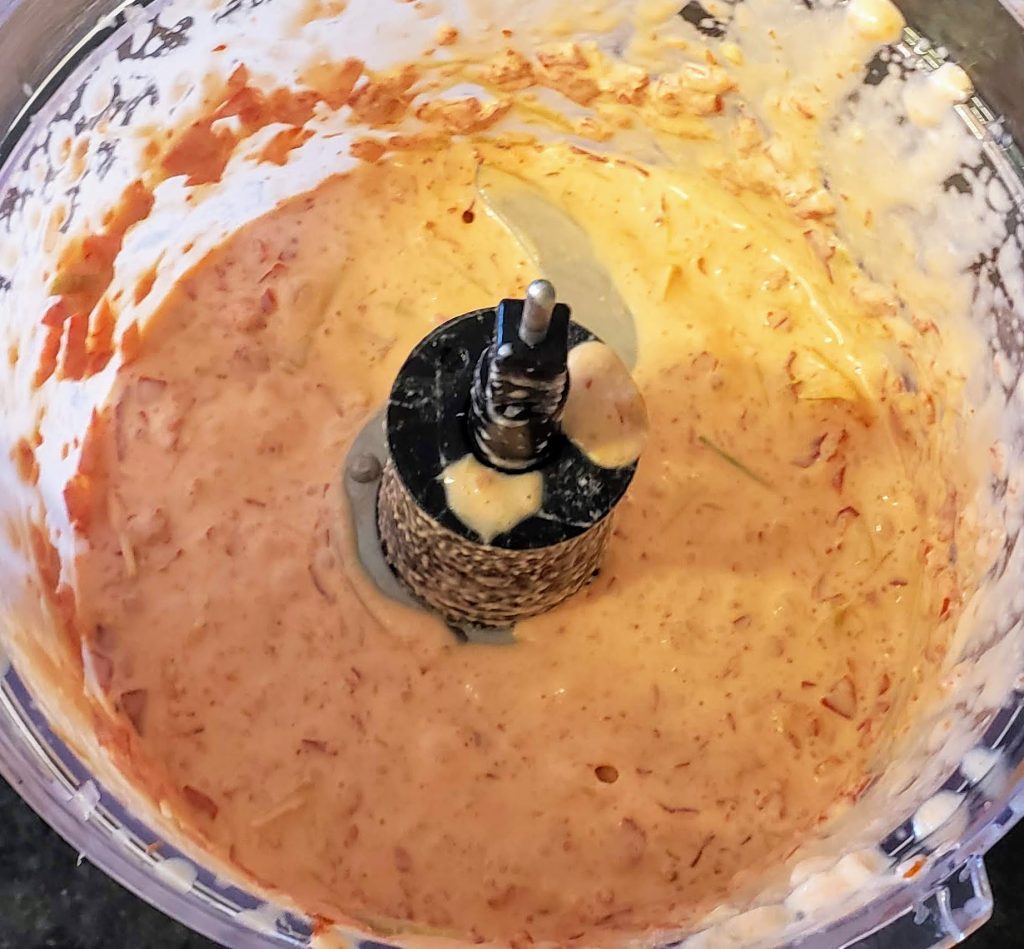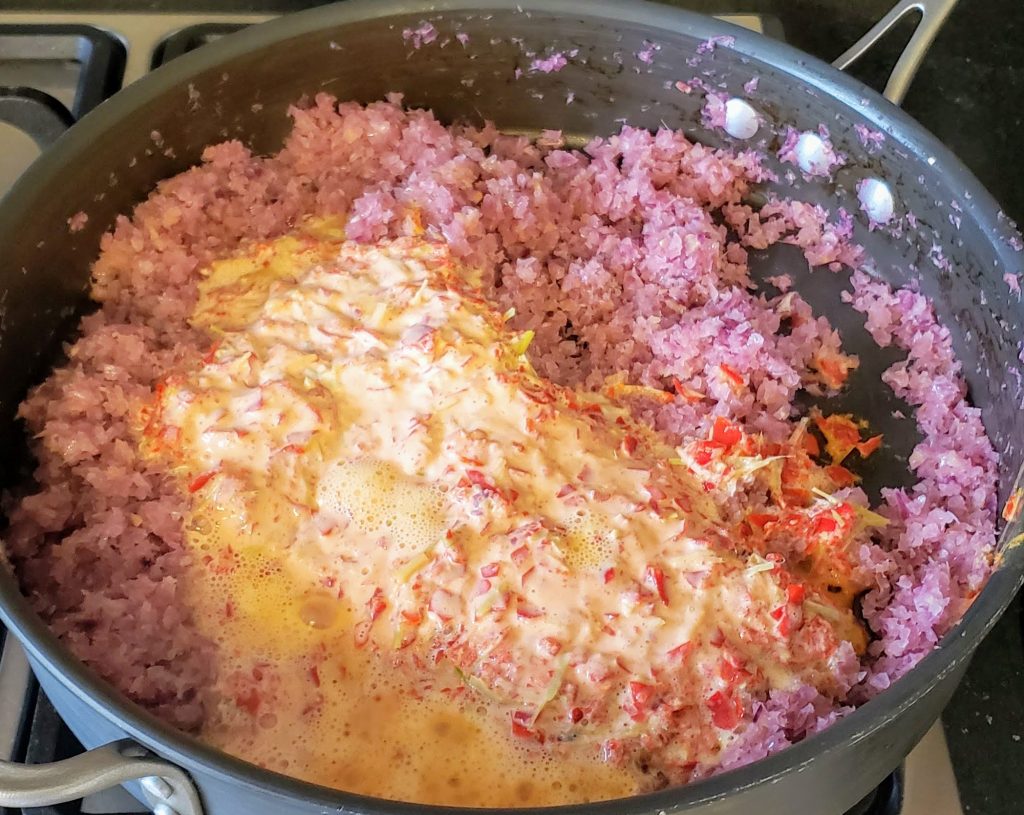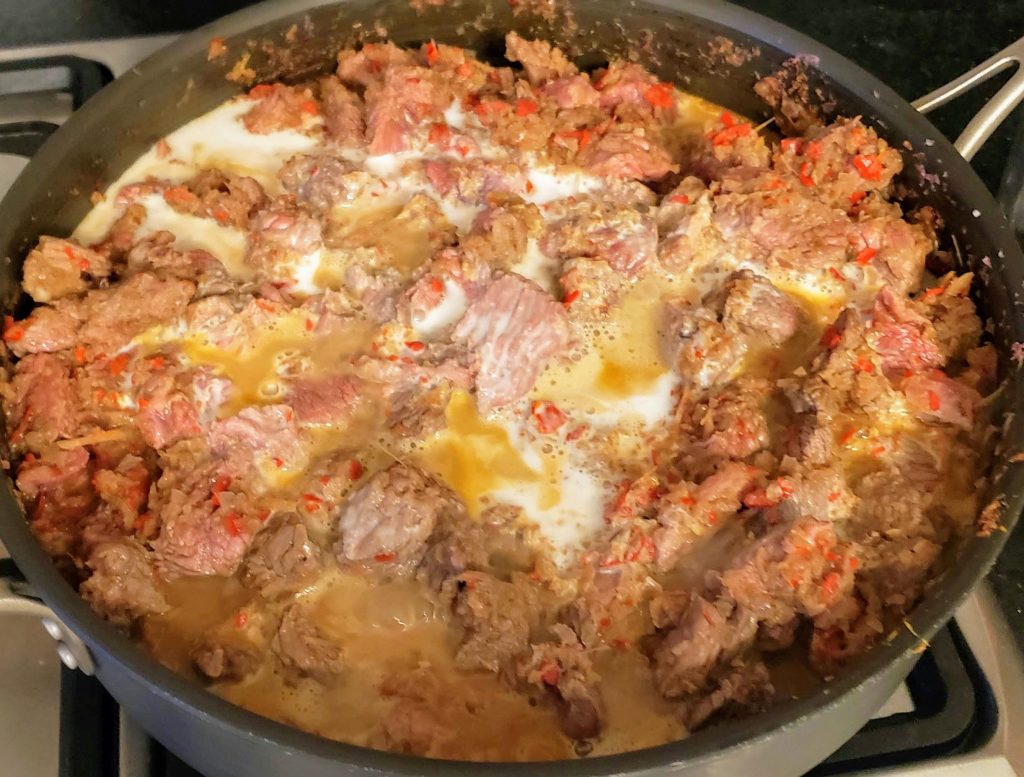Carol, my Malaysian friend, and a professional chef taught me how to make this dish. It is so aromatic and flavorful and the meat just melts in your mouth. Heaven! It is served with either plain steamed rice or coconut rice (where half the water has been replaced by coconut milk).
The differences between an Indian meat curry and this dish are the addition of lemongrass, tamarind pulp, coconut milk, and toasted and powdered freshly grated coconut. Rendang is simpler to make than an Indian meat curry as the vegetables and meat are cooked together without the need to caramelize them first. Also, Rendang is always made with boneless cubes of meat.
It is important to use meat that is well-marbled and can withstand long slow cooking. Good choices are the cheaper, tougher cuts of meat like chuck or pieces that come from the legs of the cow. Chuck, bottom sirloin flap and fatty brisket (point or second cut) are great for cooking low and slow. If you use the more expensive cuts that are too lean, the fat will melt off early in the cooking and the meat will toughen when overcooked.
I would not advise cooking this dish in a slow cooker as the slow cooker will turn the meat into a paste because the meat cooks faster than the vegetables. A slow cooker is a great tool when you want the meat to fall off the bone such as in pulled pork or spare ribs, but not for Rendang.
I make a lot of it and freeze it in serving size portions for future use. If I’m going to invest the time, I should get some frozen leftovers out of it.
Prep time: 45 minutes
Cook time: About 3 hours
Yield: 10-12 servings
Beef Rendang ingredients
- 4 pounds (2 kilos) chuck, bottom sirloin flap or fatty brisket point cut or second cut – cut into 1-inch cubes – ask your butcher to do this for you, if possible
- 6 red onions, peeled and cut into large chunks
- 20 red serrano peppers, seeded and deveined (use plastic gloves to protect your hands)
- 4-inch piece of ginger, washed well, skin on, cut into slices
- 2 pieces of lemongrass, white part only, about 8-10 inches long cut into 1-inch chunks
- *1 cup (200 ml) coconut milk
- *1/2 cup fresh tamarind pulp or 2-3 tablespoons tamarind concentrate
- 1/3-1/2 cup freshly grated (can be packaged, unsweetened) grated coconut, toasted and pounded into a powder
- 1-2 tablespoons sugar
- *1 tablespoon cumin powder
- Enough water to cover the beef in the stew
- Oil for the pan
- salt and black pepper to taste
INSTRUCTIONS
Click here to get the recipe for Tamarind Pulp.
1.Coarsely chop and grind the onions in either a food processor or blender. Place in a wide pan or large wok with 2 tablespoons of oil.
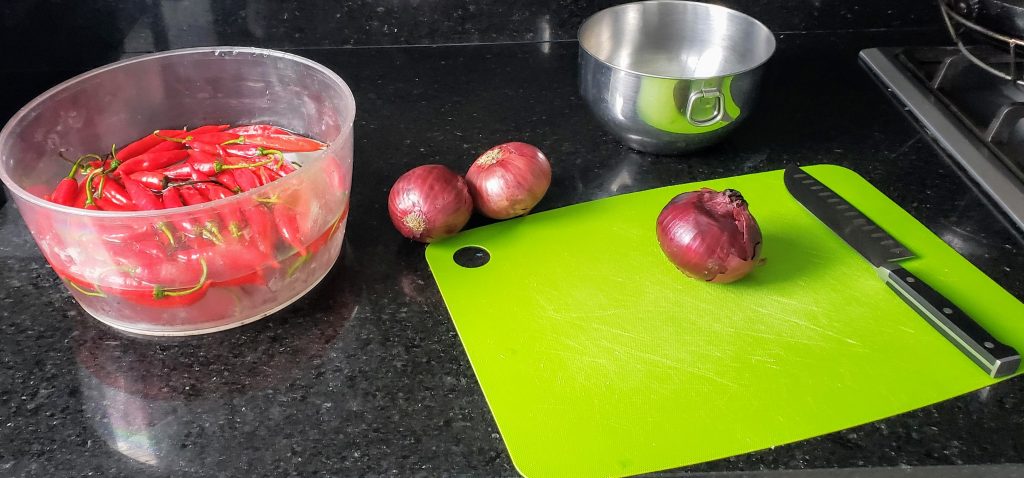
Keep an empty bowl nearby to place the trash 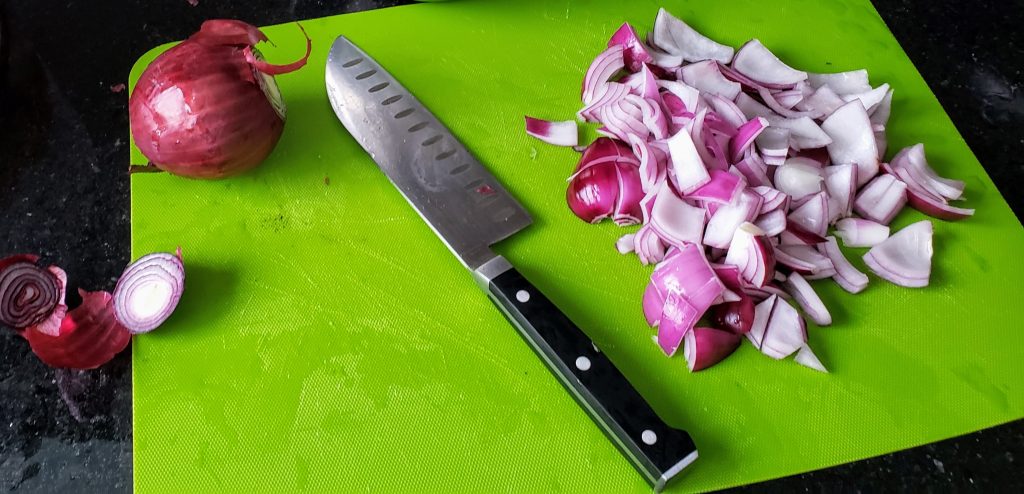

2. Wearing plastic gloves, cut the serrano chilis in half and remove the seeds and the veins. Wash well and coarsely chop ginger leaving the skin on.
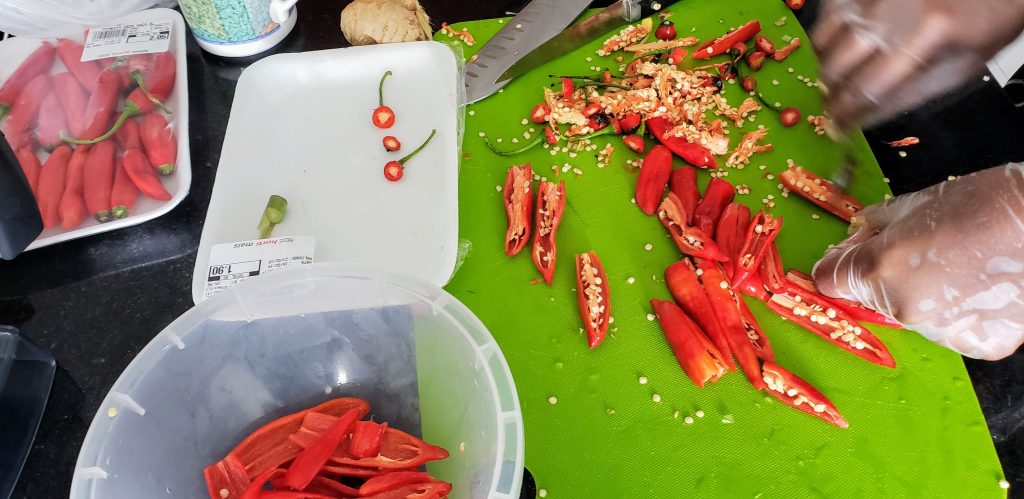

Can use a spoon or back of a small knife to deseed peppers – wear gloves
3. Cut the lemongrass at the point where the white part ends and the green part begins. Remove the tough outer layer(s) around the white part. Cut the white part in half lengthwise exposing the layers inside. Wash the lemongrass well and chop it into 1-inch long pieces. It is similar to cutting leeks.
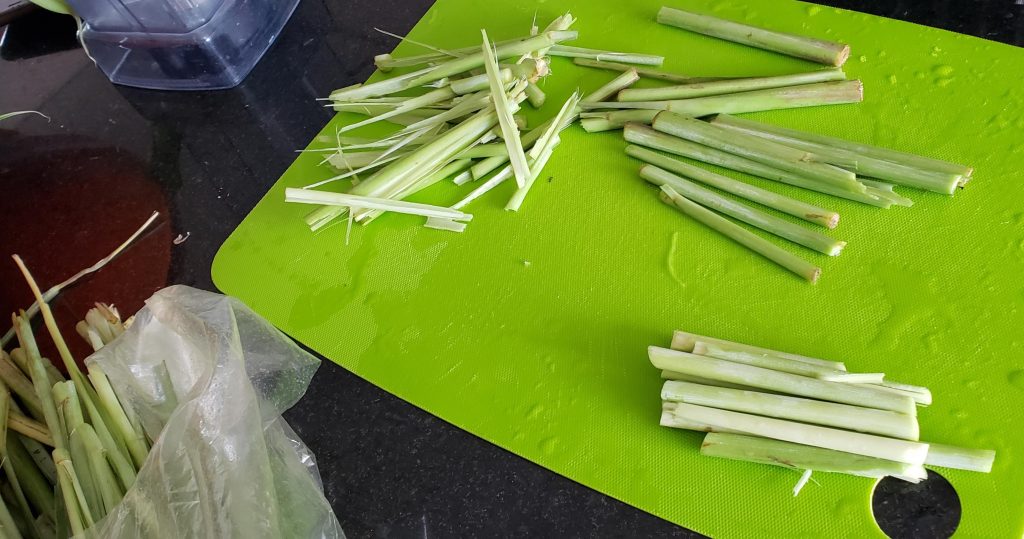
Peel off the outer layer of lemongrass 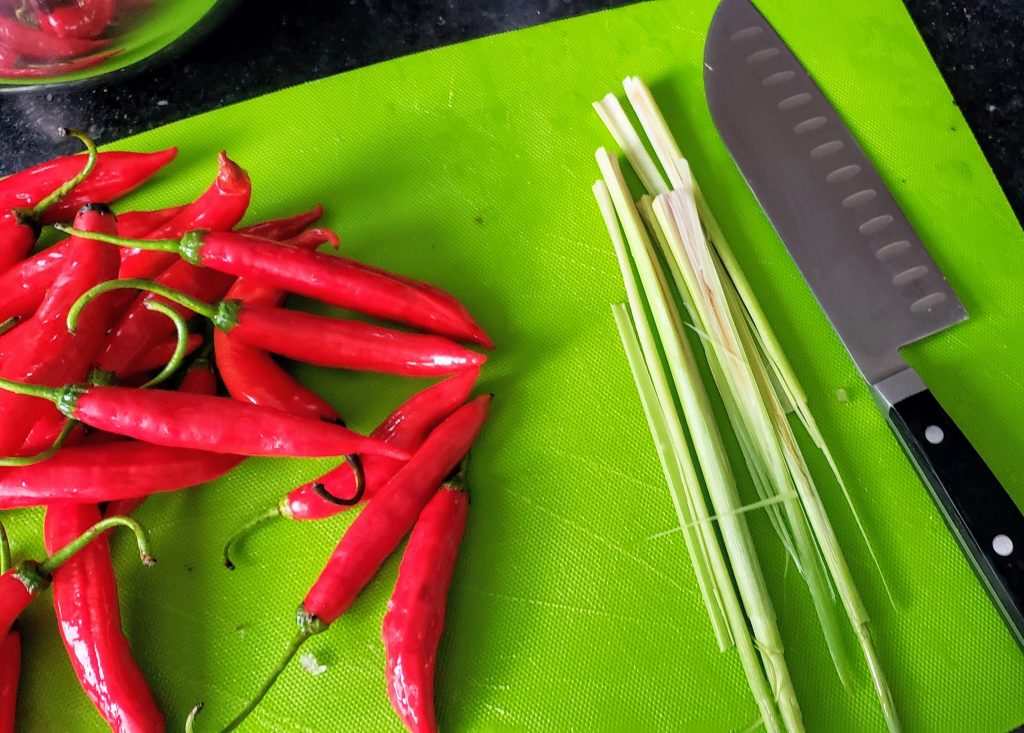

4. Add the chilis, chopped ginger, and lemongrass to the blender or food processor. Add 1 cup of coconut milk and process until smooth, or minced well. Add the puree to the onions.
5. Turn on the burner to low to medium and start cooking the vegetables.
6. Meanwhile, ensure the meat is cut uniformly into 1-inch cubes. Add it to the pan.
7. Let the meat and the vegetables cook together until the meat browns. Add tamarind pulp, salt, sugar, and enough water to cover the meat. Decrease the heat to low.
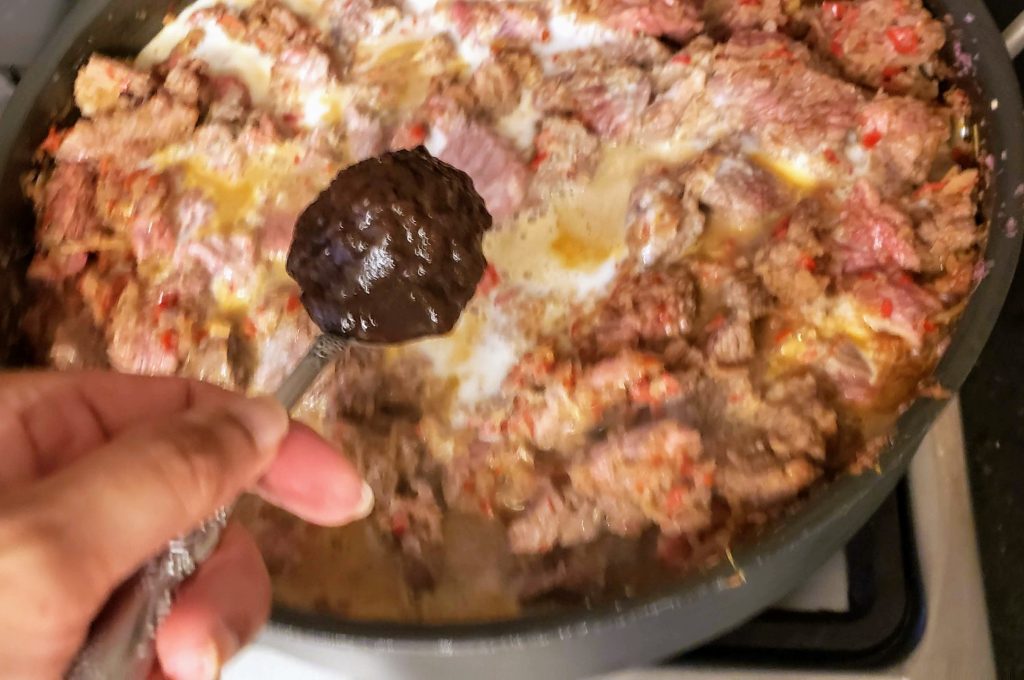
Add tamarind 
Add salt 
Add water and sugar
8. Cook the mixture for at least 2 1/2-3 hours, stirring occasionally to keep it from sticking. The meat should be fork-tender and very soft when eaten. If not, keep cooking it and add a small amount of hot water to the pan if needed.
9. Meanwhile, toast the grated coconut in a dry, non-stick pan until deep golden brown. Do this slowly and mix well so that the coconut toasts uniformly. It may take 6-8 minutes. Cool the coconut on a plate and then grind it into a powder.
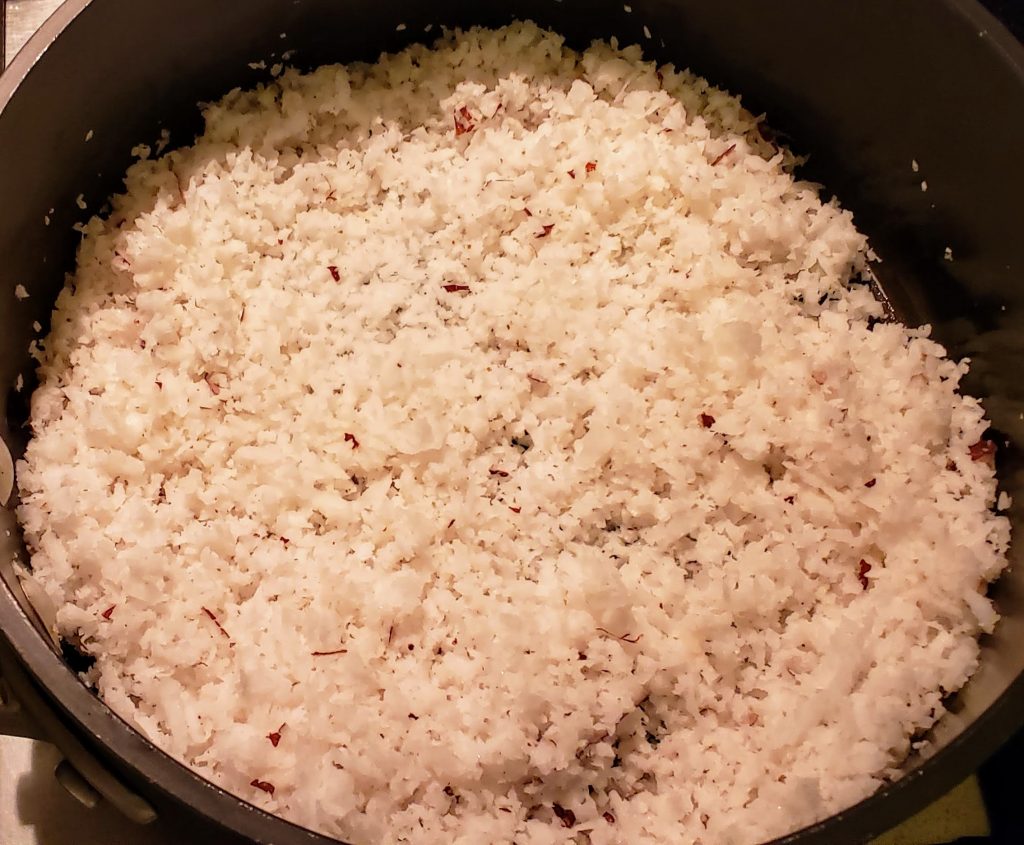
Fresh grated coconut 
toasted coconut 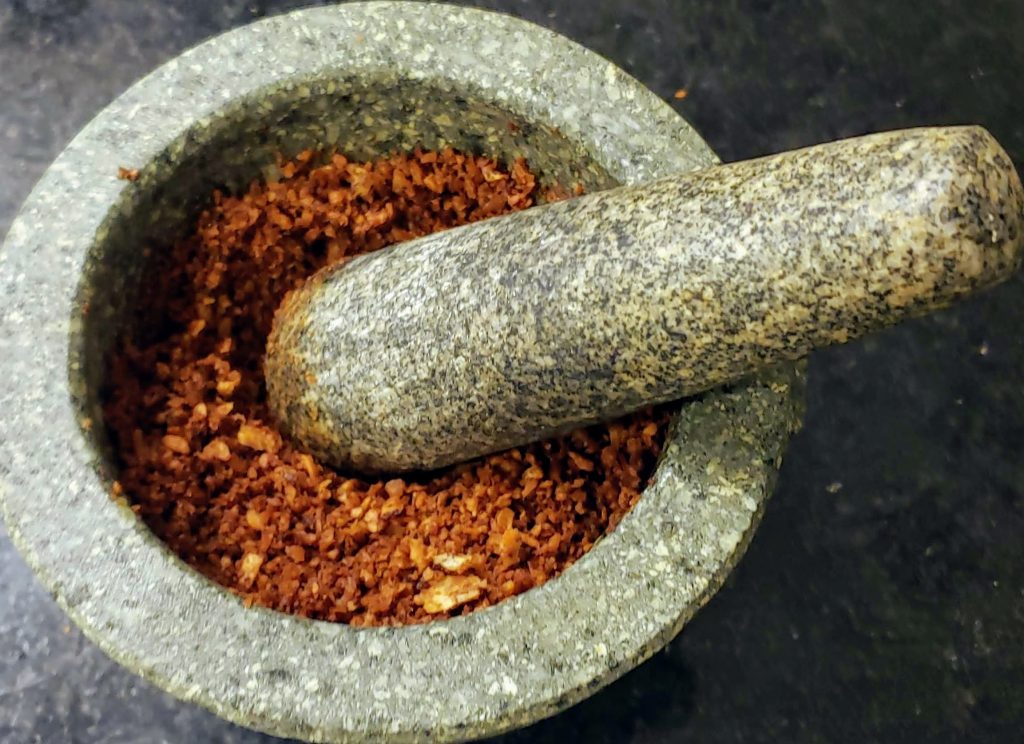
pounding coconut into a powder
10. The mixture will begin to dry out toward the end of cooking. Rendang is normally served as a very dry dish. I like it to have a thick sauce, but not be dry.
11. When the meat is nearly dry, add the coriander powder, black pepper, and the ground toasted coconut. Turn off the burner and correct for salt, sugar or tamarind (sour note).
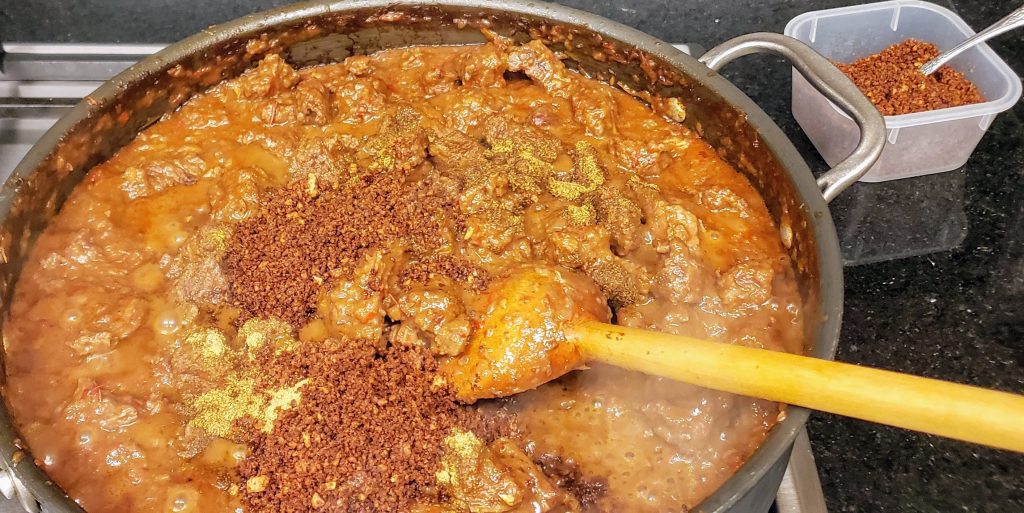
Add coriander powder and toasted coconut powder 
I like Rendang with more liquid in the sauce 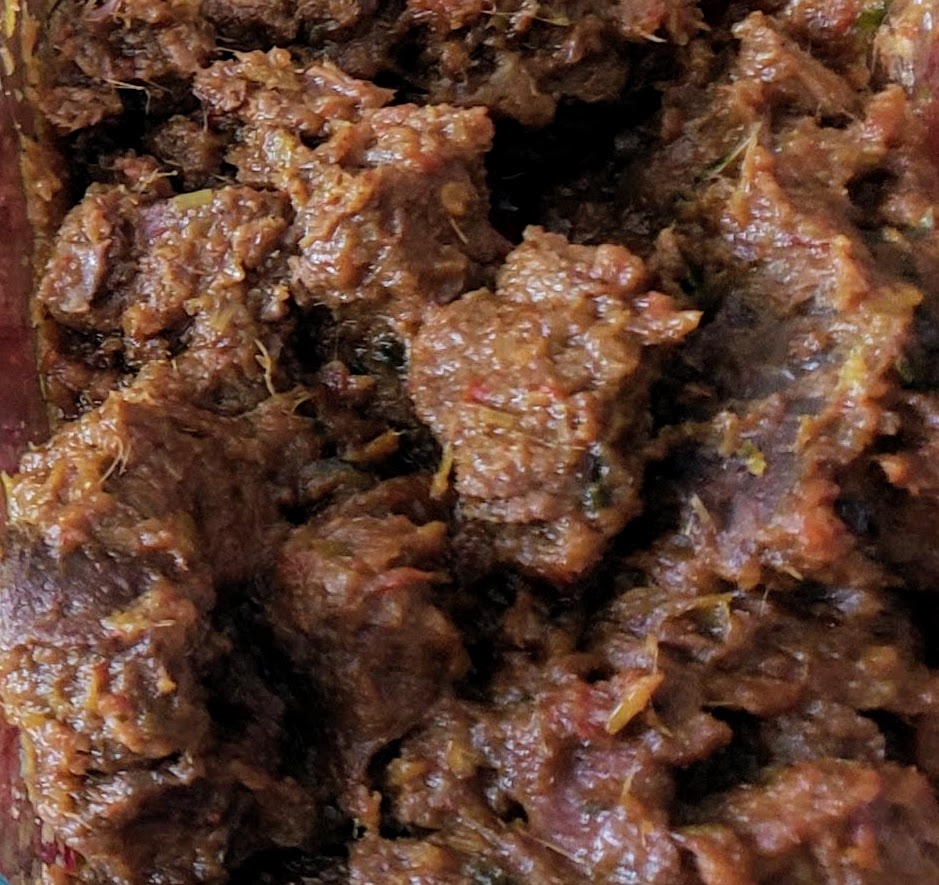
Traditional Rendang where the sauce is dry
12. Serve with plain steamed rice or coconut rice.
Note: *These ingredients may be purchased at your local Indian grocer. For this reason, I have given you the name of the spice both in English and Hindi as that is the name (written phonetically in the English alphabet) you will find it under when you go shopping.
Imli (Tamarind) – Sour and slightly sweet. Can be eaten raw, but is most often made into chutney and used as a condiment; or pulp and used in recipes for pulses, meats or noodle dishes; or as a refreshing and nutritious drink; and, as a spicy, sour and sweet candy. Tamarind pulp has the following health benefits:
- Every 100 grams of tamarind meets 15% of your daily iron intake;
- It’s a good solution for both constipation and diarrhea;
- It boosts metabolism and aids in weight loss;
- It has a strong anti-oxidant as it is extremely high in vitamin C;
- It’s an anti-inflammatory;
- It improves white-blood-cell production, thereby improving the immune system; and,
- It helps control blood sugar levels.
Tamarind consumption should be limited by pregnant women. While tamarind has benefits for both the developing fetus and the mother, it also reduces the effectiveness of certain medicines like aspirin. It is best to eat it in moderation while pregnant. However, breastfeeding mothers are advised against its consumption because its high vitamin C content can cause digestive issues in newborn babies. This is true of other foods that are high in vitamin C as well.
Sooka Dhania (coriander seeds) – Smoky (if left whole) and sour (if ground). It is added in its split form to the cooking oil in the middle of the seasoning process. If using it in the powdered form to season cooked food, add it after the burner has been turned off. Used in powder form to season vegetable stuffings when making flatbreads (Parathas) or savory pastries (Samosas and Kachoris). Used roasted and coarsely ground to season cooking oil in vegetarian and meat gravies. Ground into a powder and used at the end to layer flavor in both vegetarian and meat dishes. Is one of the components of Garam Masala. Whole seeds are boiled into a tisane to relieve menstrual cramps during heavy flow. High in fiber and aids in bowel movement; promotes insulin production. Rich in copper, zinc, and iron and vitamins K, C, and B which are good for healthy skin and hair. Assists in weight loss and reduces body fat. If you plant coriander seeds to get fresh coriander plant.
Written by Anju Kapur of Anju’s Table. All content and images on this site are copyright protected. Please do not use any of my images without my permission. Should you wish to share this recipe on your site, please add a link to this post as the source.
